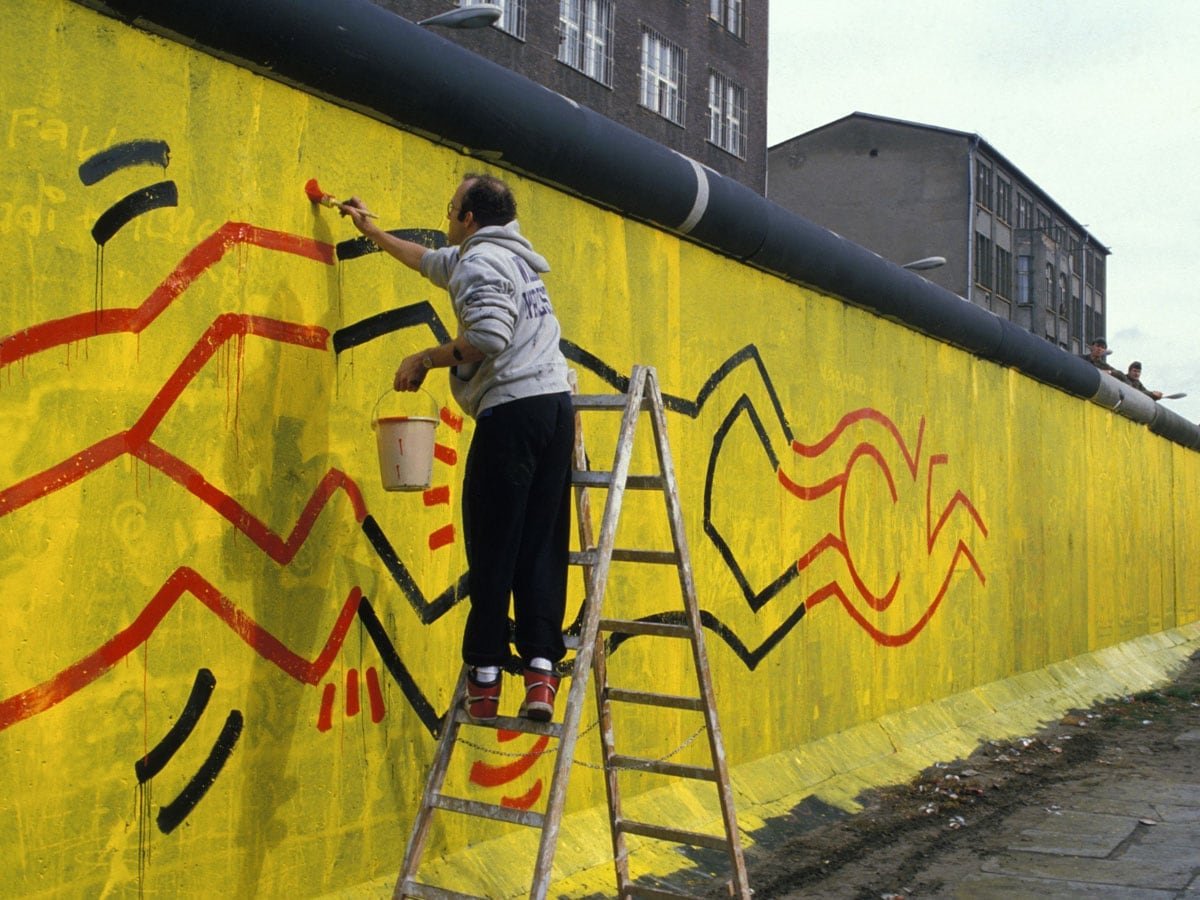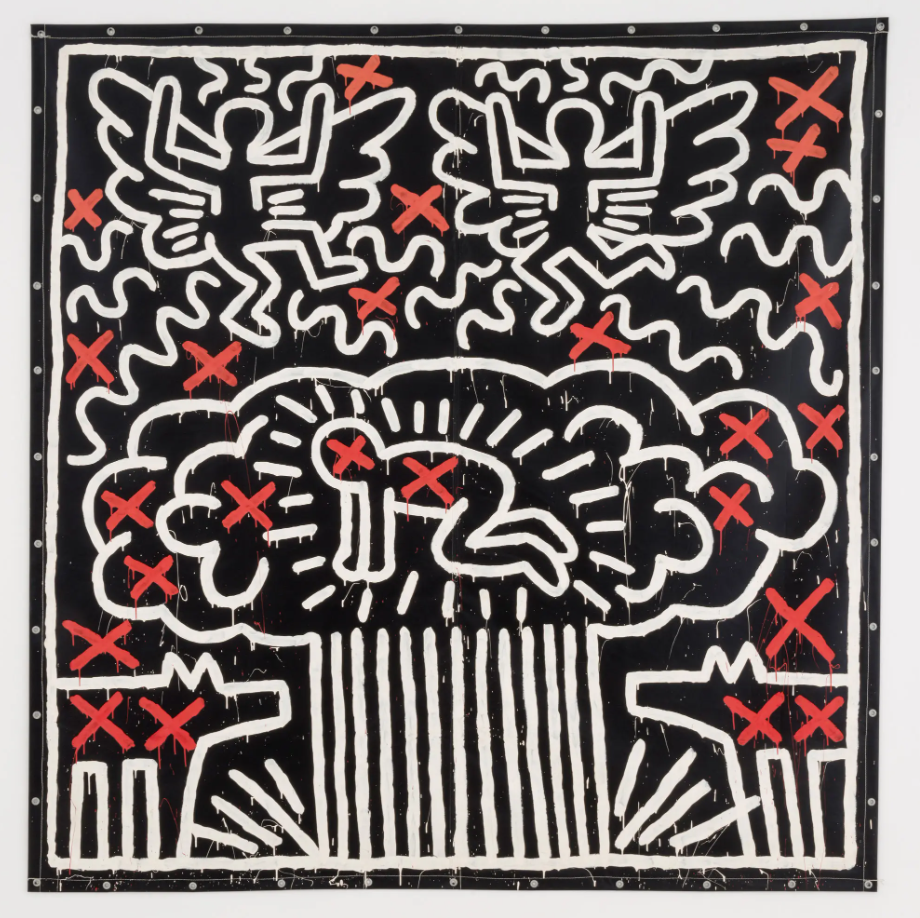The Groove 161 - Three Ideas To Consider When Building Your Legacy
THREE IDEAS TO CONSIDER WHEN BUILDING YOUR LEGACY
What will your legacy be? Have you ever asked yourself that question? I know it’s a tough one, but I think it’s important to have clarity about this as we move through life. Having this kind of compass can be extremely sobering in times when external events distract us or people want to confuse us about who we are.
A legacy cements your life's work as something that benefits future generations, even if you may never see it come to fruition. It's an internal drive to create something good, something that improves the world.
It’s not the first time I’ve written about Keith Haring, and it probably won’t be the last. As an art advisor I can say that the market is always looking for Haring’s work, as he’s one of the great American pop artists of the 20th century. Buying a Haring is both a good investment and a status symbol if you happen to display it on your walls. But in a more profound way, aside from the multimillion-dollar price tags of his paintings, it’s the legacy of Keith Haring’s work - the strong, vibrant, and very much relevant execution and concept of what he did in his short life - that has given him such staying power.
Be Consistent
Keith Haring in his studio in New York City.
It doesn’t matter if you run a small business or a global corporation or if you are an artist or a poet; we all can leave a legacy.
For Haring, his most important medium was the line, and this same line was consistent in his work whether it was a painting on a tarp, or a sculpture covered in hieroglyphics. With his line, he created his own visual vocabulary repeated time and again: the radiant baby, the dog, the dancing figure, the globe.
"My contribution to the world is my ability to draw," Haring famously said. "Drawing is still basically the same as it has been since prehistoric times. It brings together man and the world. It lives through magic.”
It’s hard to leave a legacy if what you do doesn’t have a through line. It’s not about being boxed in a category - Haring experimented through any medium he got his hands on, from painting murals to shooting videos and everything in between- it’s the consistency in both the execution and the underlying message that counts.
Nothing Is Trivial
Keith Haring painting over the Berlin Wall in 1986.
Haring's images became some of the most familiar of our time, in part because they were embedded in the urban fabric of the New York City subway and partly because they circulated on merchandise ranging from t-shirts to posters, ads, watches and the establishment of the Pop Shop, his democratic stores in New York City and Tokyo. All these may have looked banal, but Haring’s work had a depth that everyone who came in contact with it could grasp.
While it’s true that for the longest time Haring’s work wasn’t taken seriously by museums and curators, nothing he produced was done superficially. He was an activist that tackled LGBTQ rights, wars and the nuclear bomb, the apartheid regime in South Africa and even the Berlin Wall, which he painted over before its demolition by the Germans on both sides in 1989. These and other pressing topics are very much alive today, and Haring depicted them while at the same time keeping a sense of optimism and respect for human life.
Haring’s untimely death at the age of 31, due to complications with AIDS, gave him an even more urgent desire to cement his work. In the last interview he gave he said: “Nothing is trivial… There's one last thing in my head. With the thought of - of summing up. My last show in New York felt like it had to be the best painting that I could do. To show everything I have learned about painting… Everything I do now is a chance to put a crown on the whole thing. It adds another kind of intensity to the work that I do now; it's one of the good things to come from being sick.”
The point he was making is that even the smallest things matter. The way you speak, the social media posts you create, the way you interact with others. You don’t have to be at the end of your life to add that level of introspection or to examine what kind of legacy you are building with your work.
Understand Your Role in The World
Untitled (Radiant Baby), 1982, vinyl ink on vinyl tarpaulin.
For anyone who’s out there working, leaving an imprint in the world, it is important to know who you are and to know your why. Why do you do what you do? Have you tried writing a statement about that? And then saying it out loud?
Simon Sinek tells us in his book Find Your Why that “If we want to feel an undying passion for our work, if we want to feel we are contributing to something bigger than ourselves, we all need to know our WHY.”
For Haring, there was the activism within his work that drove his mission. Not everyone, however, needs to be an activist. Fixing a business, opening doors for others, serving a segment with a specific offering, those are all valid engines behind our future legacies.
“I think as much as possible, an artist, if he has any kind of social or political concern, has to try to cut through those things, and to expose as much as possible what he sees so that some people think about things that they don't normally think about.”
We must assume responsibility for all we do, knowing that there’s a ripple effect that extends beyond ourselves. This makes it all the more imperative to test if what we are doing is building a positive legacy instead of imposing a petty personal agenda on others. If we keep our “why” in front of us, reminding us of our mission, we have a higher chance to succeed than if we remain adrift.
“An artist putting as many images into the world as I am should be aware or try to understand what that means and how those images are absorbed or how they affect the world. I don't think art is propaganda; it should be something that liberates the soul, provokes the imagination and encourages people to go further. It celebrates humanity instead of manipulating it.”
Much in the same way as Haring showed us, our true legacy is not solely in what we achieve, but in how our work influences, inspires, and shapes the future. It ensures that our contributions endure and continues to impact generations to come.
JUMPSTART: IGNITE YOUR CREATIVITY FOR PROFIT, INNOVATION, AND REINVENTION
I’ve put together a free webinar for those of you who are not members of my online course and inner circle.
In the course, there are dozens of hours of transformative content for you to watch or listen at your own pace plus access to live groundbreaking monthly calls. These handful of testimonials say it all.
If you’d like to watch it, please register here (it’s on auto-repeat every 15 minutes once you have registered).
But if you are ready to enroll now, you can do so here.
HOW CREATIVITY RULES THE WORLD
If you enjoy The Groove, you will love my book.
How Creativity Rules The World is filled with practical tools that will propel and guide you to get any project from an idea to a concrete reality.
Have you gotten yours yet?
It’s in three formats: hardcover, eBook and audiobook.



